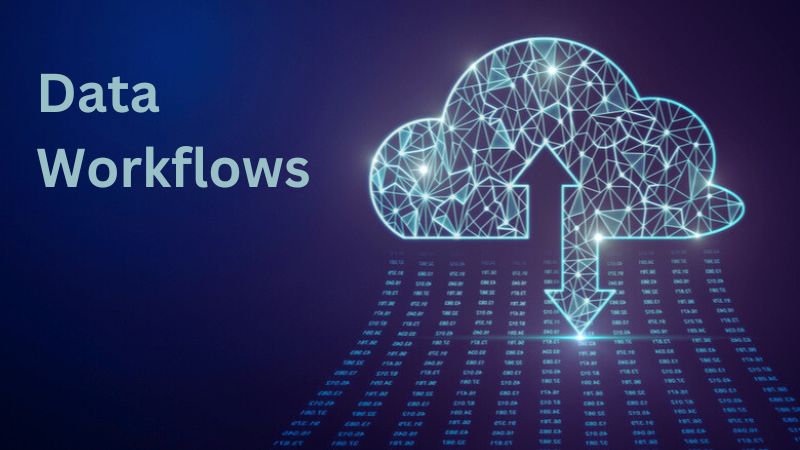Introduction to Cloud Computing
The revitalization of cloud computing has created an energized sense of strength. When modern data warehousing systems were moderately expensive pieces of hardware to get in the early 1980s, businesses might be involved in “time-sharing” to save money. If one went back in time, they would see this was the case. This successfully meant that these businesses would dial into those “remote” computers at a particular hour to do their task. This ceased when personal computers became more affordable.
It is possible to link the idea of time-sharing to that of DWS in the cloud, though the technical developments included are far more complex. Within the area of Big Data that we stay in today, they are getting increasingly important and more extensive for various reasons. Data warehouses hosted on the cloud nowadays do not adhere to that strict design. They are far more adaptable. Whether discovering cloud-based solutions or improving your data integration procedures, partnering with data warehousing consulting services provider can raise your data management practices to newer heights.
Gaining an Understanding of Cloud Computing and Data
To fully increase the value of cloud computing in getting about a data analytics insurgency, it is first essential to know the values of big data and cloud computing. The term “big data” is known for the massive amount of prepared and unorganized data that many firms have used for many years and the velocity and diversity of this data. In numerous cases, outdated on-premises substructures cannot handle the scale and intricacy of big data, which fallouts in limits in terms of storing, processing, and analysis.
On the other hand, cloud computing refers to providing computer services via the Internet, including providing scalable resources on demand. Data analytics teams can make more accurate judgments based on their knowledge of how users engage with applications, websites, or other digital media because they apply various data management approaches, such as ML and business intelligence technologies. These strategies allow the teams to make more educated decisions.
Services Available in the Cloud Computing and Their Types
Three distinct categories of cloud computing services are as follows:
1. IaaS stands for “Infrastructure as a Service”: To provide service customers could sign up for and admission through the internet, the public cloud prototypical, which is most commonly used, uses many cloud servers combined and situated in data centers. Suppliers of structure as a service can manage their customers’ data centers, provide virtual computing, and provide networking and storage services to their clients.
2. PaaS stands for “Platform as a Service”: The PaaS model operates on a subscription basis, and you can tailor the functionality according to the subscription. Without IT infrastructure, one can easily make, examine, and deploy apps, which is the main idea that reinforces this pattern.
3. SaaS stands for “Software as a Service”: Applications are not executed on their personal computers but are accessed over the internet. It gives each user the unique opportunity to effortlessly customize apps to correspond with their preferences, such as customization unique to each firm or user, and it continues to function even after updates have been implemented.
4. Multitenant Architecture: The introduction of a multitenant architecture involves allocating a shared infrastructure and code base by all users and applications, which is maintained centrally. Implementing a unified infrastructure allows Software-as-a-Service (SaaS) companies to drive quick innovation and save the effort formerly dedicated to keeping versions numerous of obsolete code. This is because all clients operate on a uniform basis.
Evolution of Data Warehousing in the Cloud Systems

Cloud-based data warehouses have become the prevailing expectation. The era in which businesses were required to acquire hardware, establish server rooms, and recruit, educate, and retain a specialized workforce to manage their operations has become a thing of the past. Using a laptop and a credit card allows individuals to easily access an extensive range of computer power and storage capacity with less effort. Data warehousing is increasingly becoming important, particularly with the arrival of cloud computing.
The development of the cloud has transformed how industries handle and examine their data. Conventionally, it involved storing vast volumes of servers on premises that are often used for storing structured data, necessitating substantial initial expenditures in hardware and upkeep expenses. A conventional data warehouse is situated inside your business premises. You acquire the necessary gear and server areas and employ the personnel to operate them.
Amazon, Google, and Snowflake were crucial in leading this transformation. Amazon Redshift provided a comprehensive, cloud-based data warehouse solution that included petabyte-scale operations, significantly reducing the obstacles for data-intensive apps. The cloud data warehouse offered by Google BigQuery is server-free, extremely flexible, and efficient, enabling even tiny enterprises to do big data analytics. For developers looking to interact with Google BigQuery with Java, it offers seamless integration, allowing Java applications to query large datasets efficiently. Snowflake, having its architecture tailored for cloud computing, provided distinct computation and storage resources. This concept facilitated enterprises’ ability to expand their storage and computational requirements autonomously, resulting in enhanced operational effectiveness and financial benefits.
Benefits of Cloud Computing for Data Warehousing
- You can depend on the cloud providers’ outstanding obtainability and steadiness, as they offer backup, recovery, and joblessness solutions for your data warehouse. Additionally, users can benefit from cloud service providers’ security and compliance protocols that safeguard their data against unwanted access or breaches. The degree of accessibility mentioned is of utmost importance for enterprises that function worldwide and want their systems to remain operational round the clock.
- CDW provides a pricing model based on consumption, eliminating the need to invest in IT infrastructure hosting and aligning expenditures with data utilization.
- Since data warehouse solutions are widely used and crucial for company expansion, entrepreneurs often contemplate establishing them on-site or in the cloud.
- Businesses’ adoption of cloud data warehousing solutions is not a fortunate occurrence. Entrepreneurs are drawn to the technology due to its capacity to facilitate business intelligence and its high efficiency level. Additionally, it is precisely engineered to accommodate the rapid expansion of data, making it an ideal option for organizations seeking to expand.
- Scaling performance is quite a quantifiable advantage of the cloud for firms that are operating all over the world. The alteration in performance among cloud data warehouses and old-style organizations is enormous. The significant benefits of the cloud depend on the numerous choices accessible to enhance rate presentation. One such instance is the significance of high data throughput inside a stock trading application since it facilitates quick analysis of market data and prompt execution of deals.
Bottom Line
From its embryonic phases in the 1980s to its conversion to the cloud computing, the drive of news has been fascinating. It is obvious that data warehouses have a more significant effect on the complete expertise business and have determined several innovations that take advantage of today. Regardless of how they grow, the eventual objective is always reliable: using data professionally to get better business consequences.
Read more:



